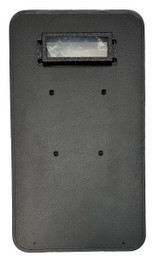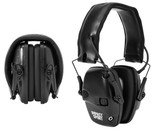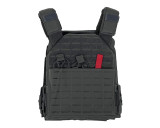Guide To Ballistic Shields: Lighting, Training, and Warranty - Battle Steel®️
Guide To Ballistic Shields: Lighting, Training, and Warranty
The ballistic shield is a vital piece of gear for any police or military operator. To help you choose the shield that best meets your requirements, we have considered some criteria to keep in mind: lighting, training, and warranty.
Lighting for Ballistic Shields
Ballistic shields are often equipped with lighting systems that give the operator a strategic advantage. Shield lighting is not a standard lamp or torch, but part of the shield that will face the same ballistic and environmental threats. It must be fabricated from extremely strong materials.
The design of shield lighting plays an important role in its effectiveness. The operator will need to illuminate their surroundings or kill the light for safety at a split-second’s notice. For this reason, the on-off switch must be intuitively placed for easy access even when your hands are full.
Different types of light provide law enforcement and military officers with tactical advantages in all kinds of situations:
- A wide-angled beam increases your field of vision much more than weapon-mounted lights.
- A solid beam of high-watt lighting illuminates any hazards or obstacles in your surroundings and can also be used to dazzle your opponents.
- Strobe lighting mode can be used as a highly effective method of disorientation.
Aftermarket vs Integrated Lighting
When purchasing shield lighting, you have two options: lights already built in to the shield, or lights attached to the shield afterwards. Whichever you choose, you should think carefully about features such as pressure switches, securing mechanisms, and cables.
- Retrofittable ballistic shield lights:
Some lights are secured by drilling them onto the shield, others with clamps or industrial-strength Velcro. These last two mechanisms are ideal because drilling can compromise the integrity of the ballistic shield and void its warranty. When purchasing aftermarket lighting, ensure that the pressure switch can be placed somewhere suitable on the handle and activated at a moment’s notice, and that the cables can be safely tucked away. An advantage of retrofittable lights is that you can mix-and-match the brand and model of shield and lighting, and find a combination that best suits your needs.
- Integrated ballistic shield lights:
Other lights are completely integrated into the shield at the point of purchase. This is a great solution for police or military agencies that already know which lighting systems they want. The main benefit of integrated lighting is the absence of exposed wires and the optimally-placed switches and batteries inside the handle. A disadvantage of such lights is that you cannot choose your own lighting system and it can only be changed/replaced by the manufacturer – otherwise the ballistic threat protection is compromised and warranty may be voided.
Training
Purchasing the best equipment is only half the battle: you must know how to use it. In critical and dangerous situations, you need muscle memory. You simply don’t have time to get used to your shield handle, find the light switch, or fumble around with your shield and weapon. Law enforcement and military operators should train with their shields in different scenarios and carefully read the manufacturer’s manual to understand the shield’s strengths and limitations. Some manufacturers and sellers even offer shield-specific training alongside their products, both online and in the field. This preparation helps operators to deploy defensive gear most effectively and speed-up their decision making at critical moments. Without training, you risk serious injury or even death.
Price
The price of ballistic shields varies widely because they come in all shapes, sizes, and materials: from small shields to huge trolley-mounted systems; from standard rectangular shields to curved shields with a reinforced viewport; from Level IIIA handheld shields to Level IV shields that can withstand armor-piercing ammunition. Because of their protective capabilities, ballistic shields are more expensive than standard riot shields. Most are in the range of $500 - $4000, however larger shields e.g., trolley mounted, are much more expensive.
Warranty
With such an expensive piece of equipment, customers want to get their money’s worth. Your shield purchase is protected by a warranty which ranges from 5 – 25 years depending on the manufacturer. You should purchase only from a reputable manufacturer. The main reason, of course, is that you shouldn’t put your life in the hands of an unreliable company. Secondly, you want to ensure that their warranty policy will take responsibility for any problems with your shield.
As with any warranty, you must read the small print. Warranties cover defects in the shield but not any problems that arise from customer misuse. These include:
- Improper storage of the shield e.g., for a prolonged period of time in a patrol car or damp warehouse.
- Tampering with the shield e.g., drilling holes to install a lighting system or trying to fix a broken shield.
- Inappropriate deployment e.g., purchasing a Level IIIA shield and deploying it against Level IV rifle threats, causing severe damage to the shield.
How long do ballistic shields last?
We recommend that you replace your ballistic shield every 5 – 8 years, or more frequently for heavily-used shields. Even if the shield is undamaged by ballistic threats, over time its fibers will become rigid and brittle, compromising the shield’s protective capabilities and therefore the safety of the operator. If your shield is cracked or pierced then it must be replaced immediately. You should carefully check other components of the shield e.g., lights and viewports, for any damage. Sometimes you can replace these components yourself, other times you must buy a new shield – check the manufacturer’s guidance and warranty. The best way to preserve your shield is to deploy it only for intended situations and store it properly.
Choosing your ballistic shield
To sum up, there are many different factors that come into play when selecting a ballistic shield. There is no one-size-fits-all shield as each law enforcement and military agency has their own priorities and intended missions. Lighting, training, and warranty are just some things to consider – you can read our article about the features and design of ballistic shields for more guidance.
Recent Posts
-
Understanding Ballistic Shield Ratings and Their Applications
The Trusted Name in Tactical Defense - BattleSteel® When it comes to protecting those who protect us …2025-04-19 -
The Importance of Hearing Protection in Tactical Environments
The Legacy of BattleSteel® BattleSteel® is a trusted name in the world of tactical defense equipment …2025-04-14 -
How to Properly Fit and Wear a Plate Carrier
About BattleSteel and Their Mission BattleSteel is a trusted name in the tactical gear industry, ren …2025-04-11


